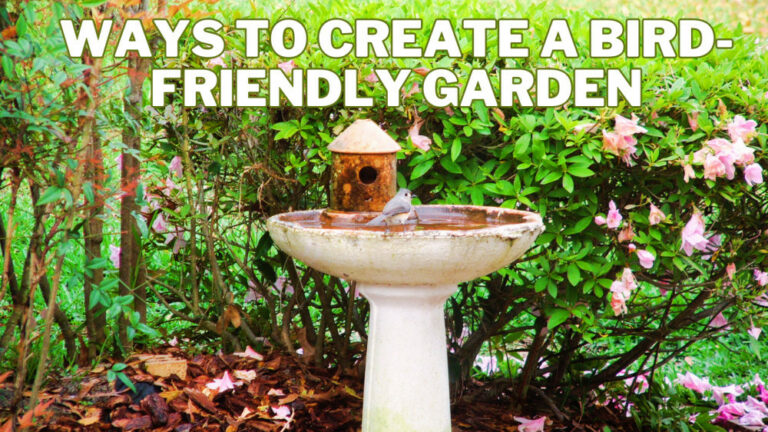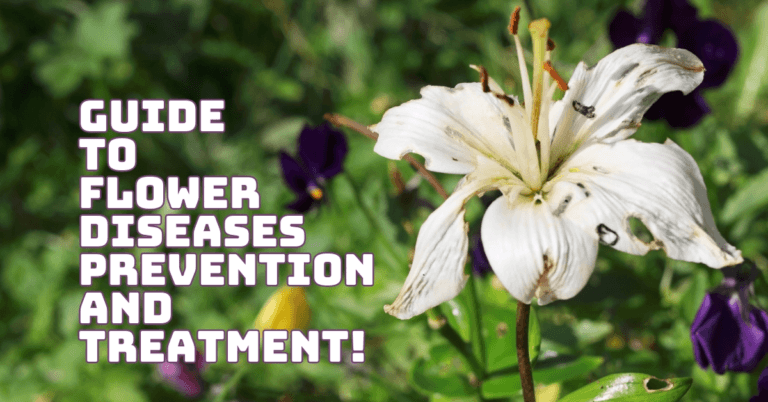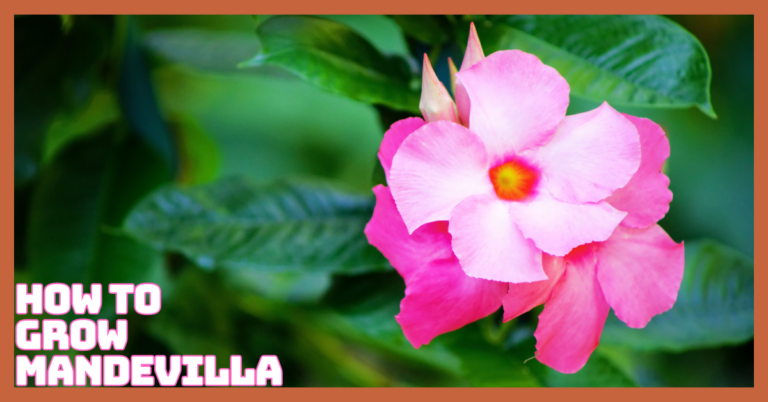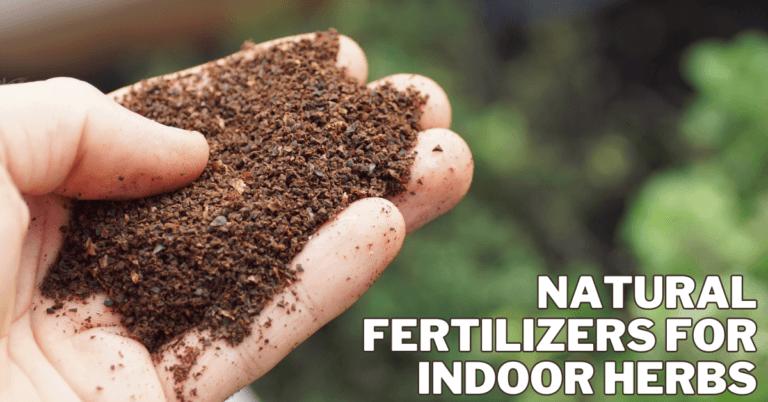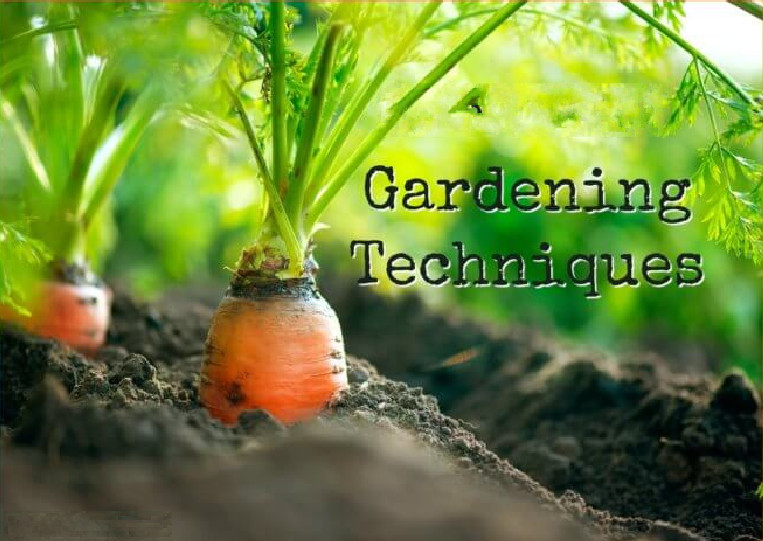Types Of Bulbs To Plant For A Gorgeous Garden
Types Of Bulbs To Plant For A Gorgeous Garden
Gardening enthusiasts know bulbs are one of the easiest and most rewarding ways to add colour, fragrance, and texture to any garden.
When considering types of bulbs to plant, gardeners can choose from a wide variety, each offering distinct features, blooming times, and care needs to suit any garden style. Bulbs come in various types, each with unique characteristics, blooming seasons, and care requirements.
In this blog, we’ll explore the different types of bulbs you can plant, their ideal growing conditions, and tips for creating a stunning garden that blooms throughout the year.
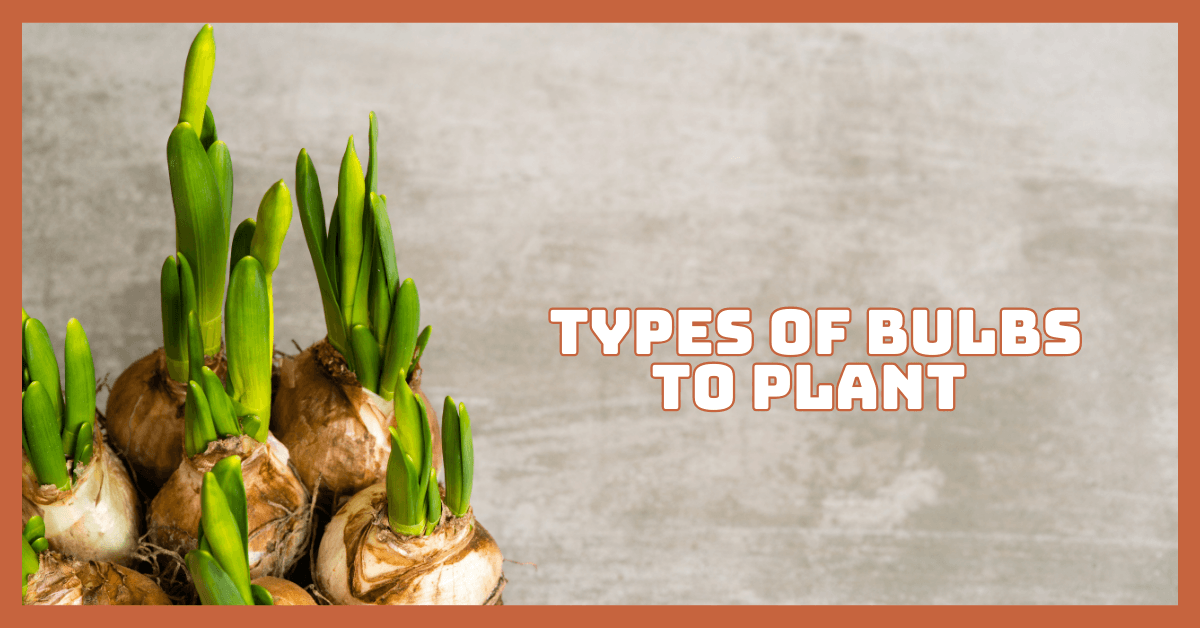
What Are Bulbs?
Bulbs are underground storage structures that contain the nutrients needed for a plant to grow and bloom. They are classified into several categories based on their structure:
1. True Bulbs
Genuine bulbs consist of layers of fleshy scales that store nutrients, enabling plants to survive dormancy. They have a central shoot that produces leaves and flowers. Examples include tulips, daffodils, and onions, which bloom from these nutrient-rich structures.
2. Corms
Corms are solid underground storage structures with a bud on top. Unlike genuine bulbs, they lack layered scales and store food in their compact structure. Plants like crocus and gladiolus use corms to regrow and bloom each season.
3. Tubers
Tubers are swollen underground stems that store energy for regrowth. They have multiple “eyes” or buds that sprout into new plants.
Dahlias and caladiums rely on tubers for propagation, producing vigorous shoots and flowers from their nutrient reserves.
4. Rhizomes
Horizontal underground stems called rhizomes periodically produce roots and shoots. They spread laterally, allowing plants like irises and cannas to expand naturally. This growth habit helps them colonize new areas while surviving seasonal changes.
5. Tuberous Roots
Tuberous roots are thickened roots that store nutrients instead of stems. Unlike tubers, they grow downward from the plant’s base.
Plants such as begonias and sweet potatoes rely on tuberous roots to sustain growth and reproduction throughout the growing season.
6. Pseudobulbs
Pseudobulbs are swollen stem structures found in orchids and some other epiphytic plants. They store water and nutrients, helping plants survive dry conditions. Unlike genuine bulbs, pseudobulbs grow above or just below the soil surface and produce new growth from their base.
7. Cladodes
Cladodes are flattened, modified stems that function in photosynthesis and water storage. Found in plants like asparagus, they help reduce water loss in arid environments. Unlike leaves, cladodes remain green and persist for extended periods, providing continuous energy for the plant.
8. Stolons (Runners)
Stolons are horizontal, above-ground stems that produce new plants at their nodes. Strawberries and spider plants use stolons for rapid propagation. These structures allow plants to spread efficiently, creating genetically identical offspring without relying on seeds.
9. Offsets
Offsets are small daughter plants that form at the base of a parent plant, often in bulbs or succulents. Examples include aloe vera and lilies. These offsets develop their roots and can be separated for propagation, ensuring continuous plant growth.
10. Taproots With Storage Function
Some tap roots, like those in carrots and radishes, store food and nutrients. These roots grow deep into the soil, anchoring the plant while acting as a reservoir for essential energy. They are vital to a plant's ability to survive adverse growing conditions.
Types Of Bulbs To Plant
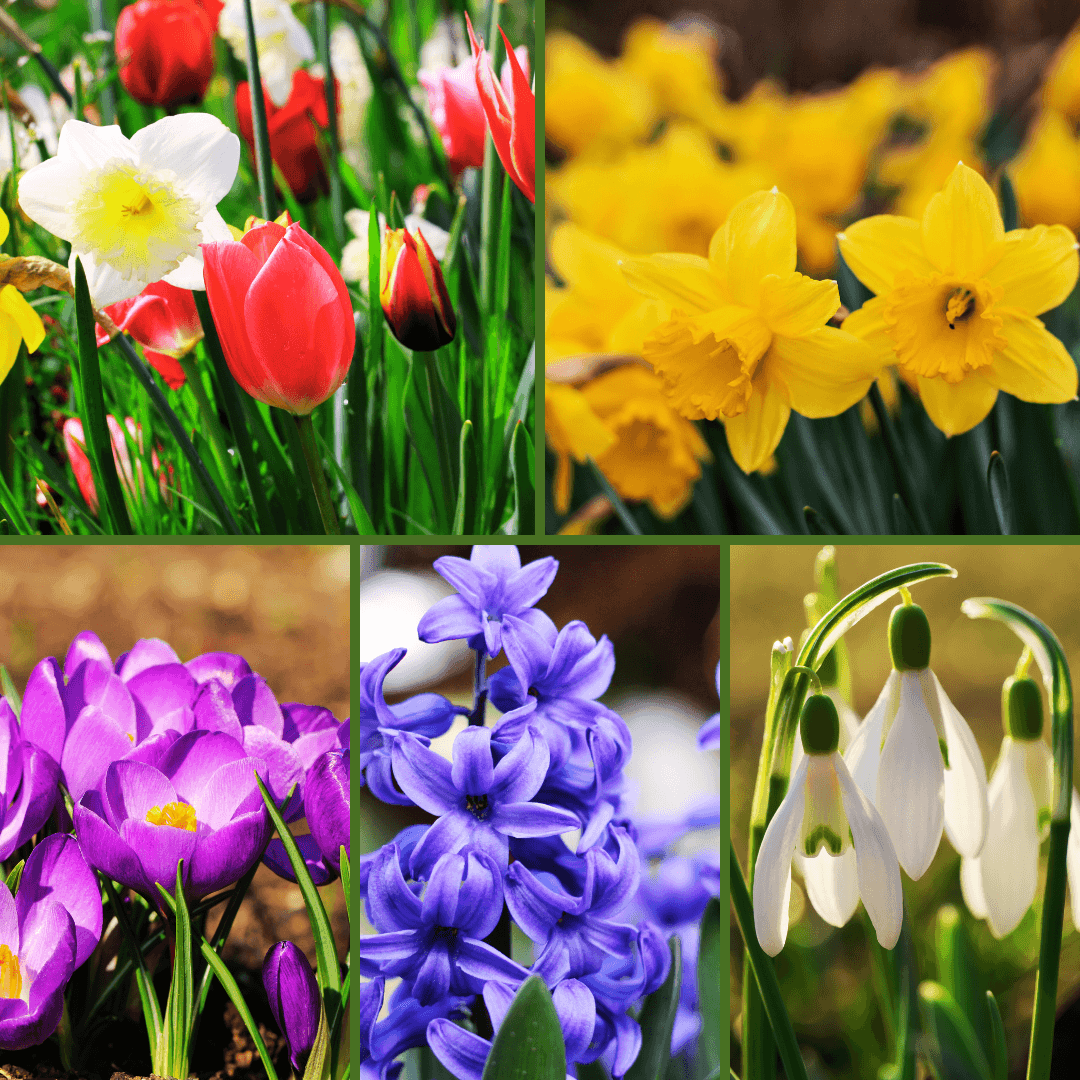
1. Spring-Blooming Bulbs
Planted in fall, these bulbs bloom in early spring, adding fresh colour after winter.
Tulips (Tulipa)
Tulips produce vibrant, cup-shaped red, yellow, pink, and purple flowers that bloom from early to late spring. They do well in well-drained soil that receives full sun to light shade. Plant them in clusters and protect them from deer and rodents for a stunning display to ensure healthy growth.
Daffodils (Narcissus)
Daffodils feature trumpet-shaped yellow, white, or orange blooms that appear in early to mid-spring. They do well in well-drained soil that receives full sun to light shade.
These deer-resistant, low-maintenance flowers naturalize well in lawns and woodland areas, making them a long-lasting and vibrant addition to any garden.
Crocus (Crocus)
Crocuses produce small, cup-shaped flowers in purple, white, and yellow, blooming from late winter to early spring. They prefer full sun and well-drained soil.
Among the first flowers to bloom, they charm rock gardens and pathways, providing an early splash of colour in colder months.
Hyacinths (Hyacinthus)
Hyacinths (Hyacinthus) bloom in mid-spring and produce dense, fragrant flower spikes in blue, pink, white, and purple hues.
Their firm, sweet scent makes them ideal for garden borders, containers, and indoor arrangements. These hardy perennials bring vivid colour and scent to any area when they grow in full sun and well-drained soil.
Snowdrops (Galanthus)
Snowdrops are among the earliest bloomers, producing delicate white, bell-shaped flowers in late winter to early spring.
Partial shade and wet, well-drained soil are ideal growing conditions for them. Suitable for woodland gardens, these elegant flowers bring a touch of brightness to the landscape during the colder months.
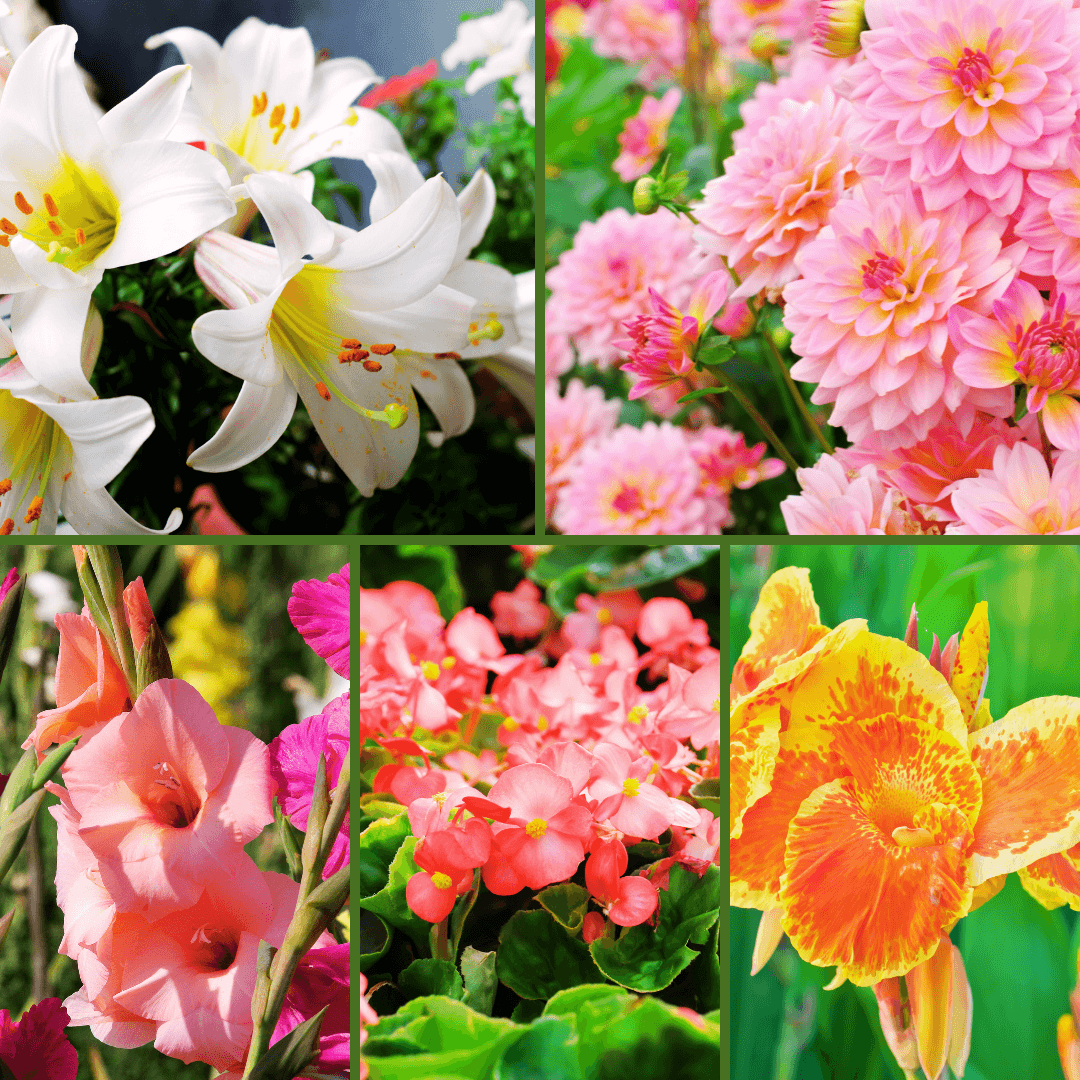
2. Summer-Blooming Bulbs
When exploring types of bulbs to plant in spring, consider those that thrive in warm weather and bloom throughout the summer for a vibrant, long-lasting garden display.
Dahlias (Dahlia)
From midsummer to fall, dahlias produce large, vibrant flowers in various shapes and sizes. They thrive in full sun and adequately draining soil.
Taller varieties should be staked to prevent toppling. Regular deadheading encourages continuous blooming, making them a stunning and long-lasting addition to gardens and floral arrangements.
Lilies (Lilium)
Lilies bloom in early to late summer, displaying tall, trumpet- or star-shaped white, yellow, pink, and red flowers. They thrive in full sun and soil that drains appropriately.
Planting them in clusters enhances their dramatic effect, and some varieties offer a strong, pleasant fragrance, suitable for garden appeal.
Gladiolus (Gladiolus)
Gladiolus plants feature colourful flower spikes that bloom from mid-summer to early fall. They thrive in full sun and adequately draining soil.
Planting them in succession extends their blooming season. Their striking appearance and long stems make them an excellent choice for floral arrangements and garden displays.
Begonias (Begonia)
Begonias bloom from summer to fall, producing waxy, rose-like flowers in red, pink, white, and yellow. They grow best in partial shade and well-drained soil.
Ideal for containers and shaded beds, they require consistently moist soil to thrive, adding beauty to indoor and outdoor garden spaces.
Cannas (Canna)
Cannas are summer-to-fall bloomers with large, tropical leaves and bright red, orange, yellow, or pink flowers. They grow in full sun and moist, well-drained soil.
Their bold foliage and vibrant blooms create a tropical garden feel, and they can also be planted near water features for added visual impact.
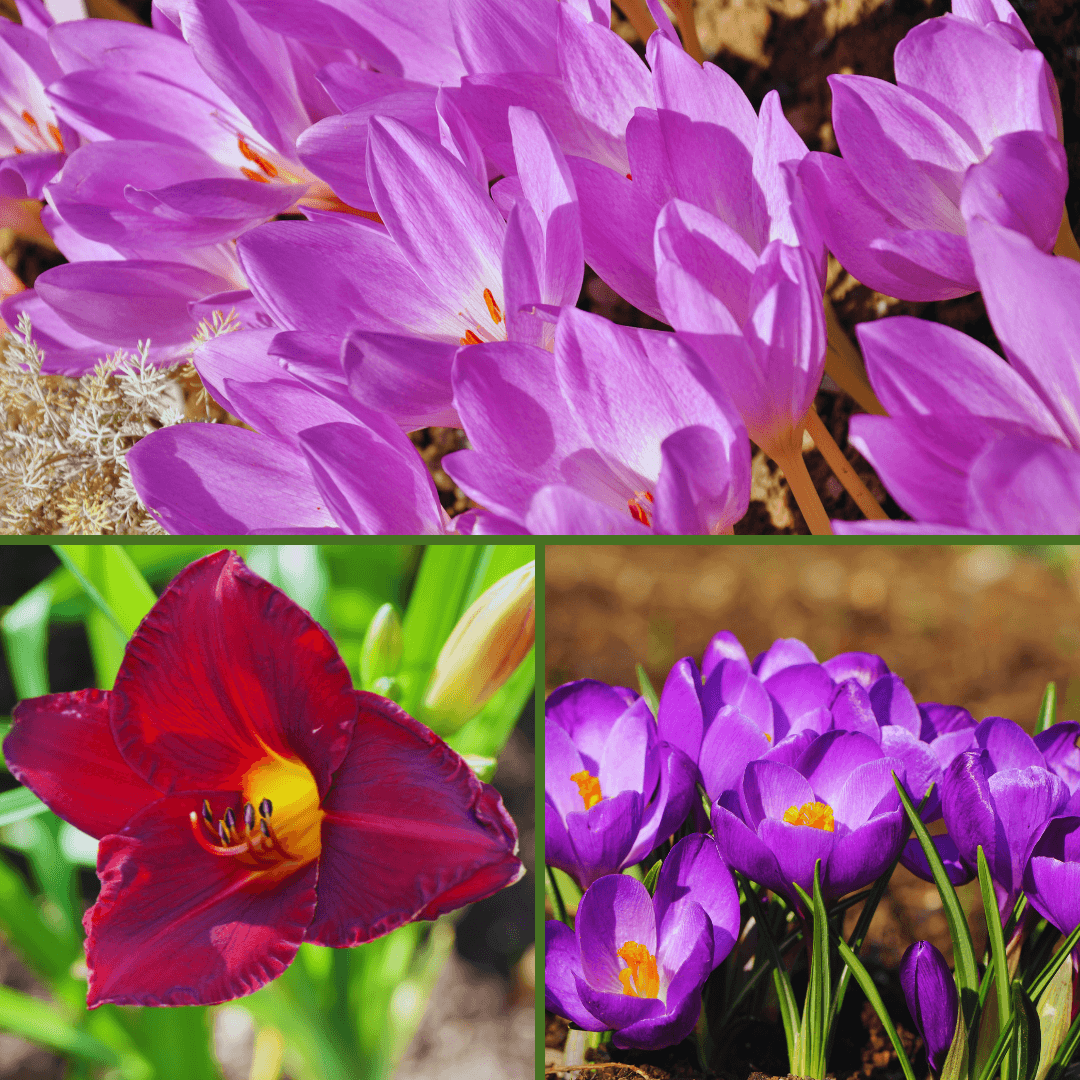
3. Fall-Blooming Bulbs
Planted in late spring or early summer, these bulbs pop in colour as temperatures cool.
Colchicum (Colchicum)
Colchicum, or “autumn crocus,” blooms early to mid-fall with pink, purple, or white cup-shaped flowers. It grows best in soil that drains correctly and in full sun to light shade. It produces a vibrant, native show that enlivens landscapes in the cooler months and is best planted in drifts.
Autumn Crocus (Crocus sativus)
Autumn crocus produces delicate, cup-shaped purple or white flowers in early to mid-fall. Unlike the spring crocus, it thrives in full sun and well-drained soil.
It provides ornamental beauty and the precious spice saffron, which is collected from its stigmas, making it ideal for rock gardens and borders.
Sternbergia (Sternbergia lutea)
Sternbergia, or “yellow autumn crocus,” blooms in early fall with bright yellow, crocus-like flowers. It is low-maintenance and drought-resistant because it enjoys full sun and well-drained soil. This cheerful, golden-hued flower adds colour to rock gardens and dry landscapes.
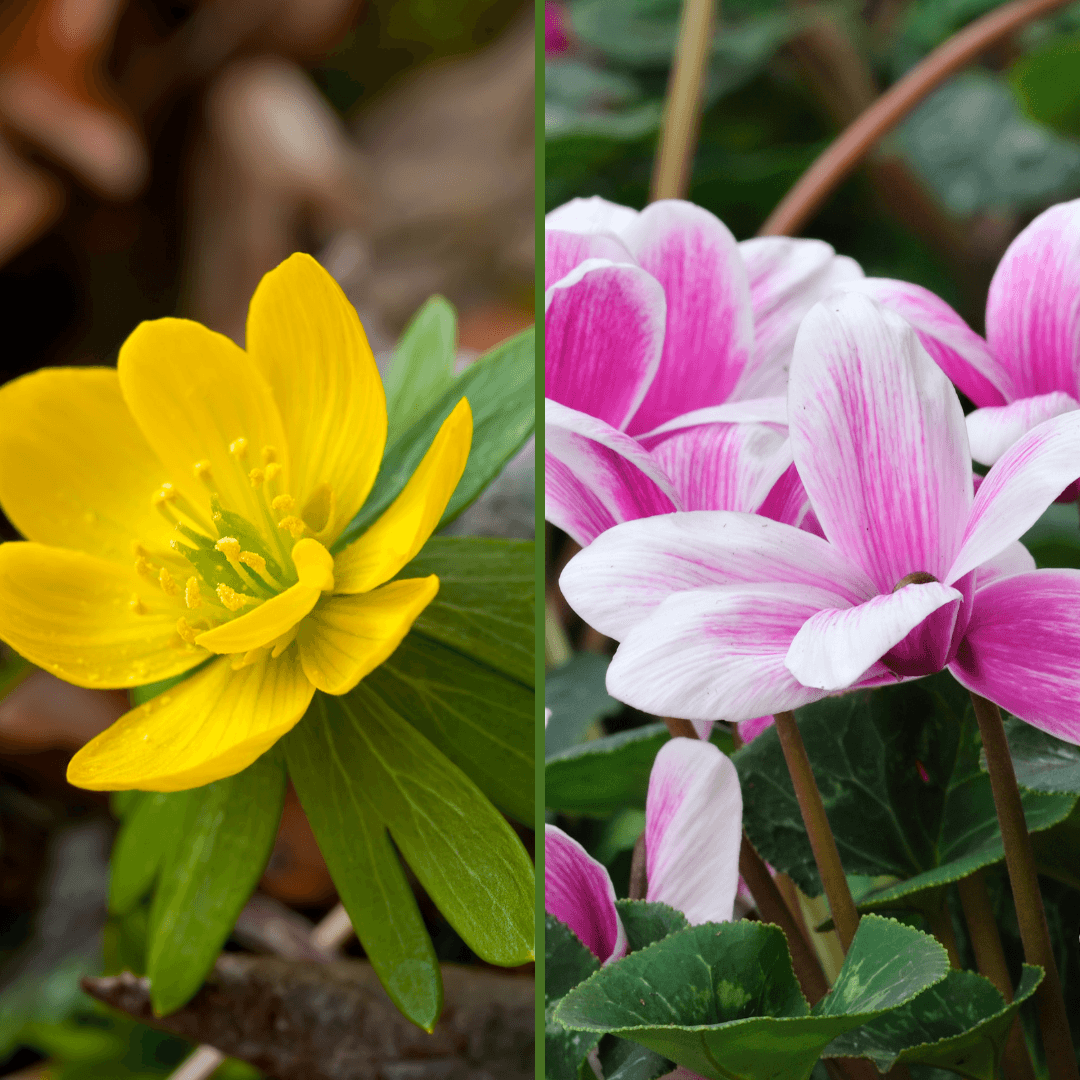
4. Winter-Blooming Bulbs
When considering types of bulbs for winter interest, choose those that bring cheerful colour to gardens during the cold months.
Winter Aconite (Eranthis hyemalis)
Winter Aconite (Eranthis hyemalis) blooms from late winter to early spring and features bright yellow, cup-like flowers surrounded by green bracts.
Thriving in well-drained soil with full sun to light shade, this hardy flower naturalizes well in woodland gardens. Its cheerful blossoms add vibrant early-season colour to shady areas.
Cyclamen (Cyclamen coum)
Cyclamen (Cyclamen coum) features heart-shaped leaves and nodding pink, white, or purple flowers. It thrives in well-drained soil and light shade from late winter to early April.
Ideal for shaded gardens or containers, cyclamen's charming, vibrant blossoms bring delicate beauty to cooler seasons.
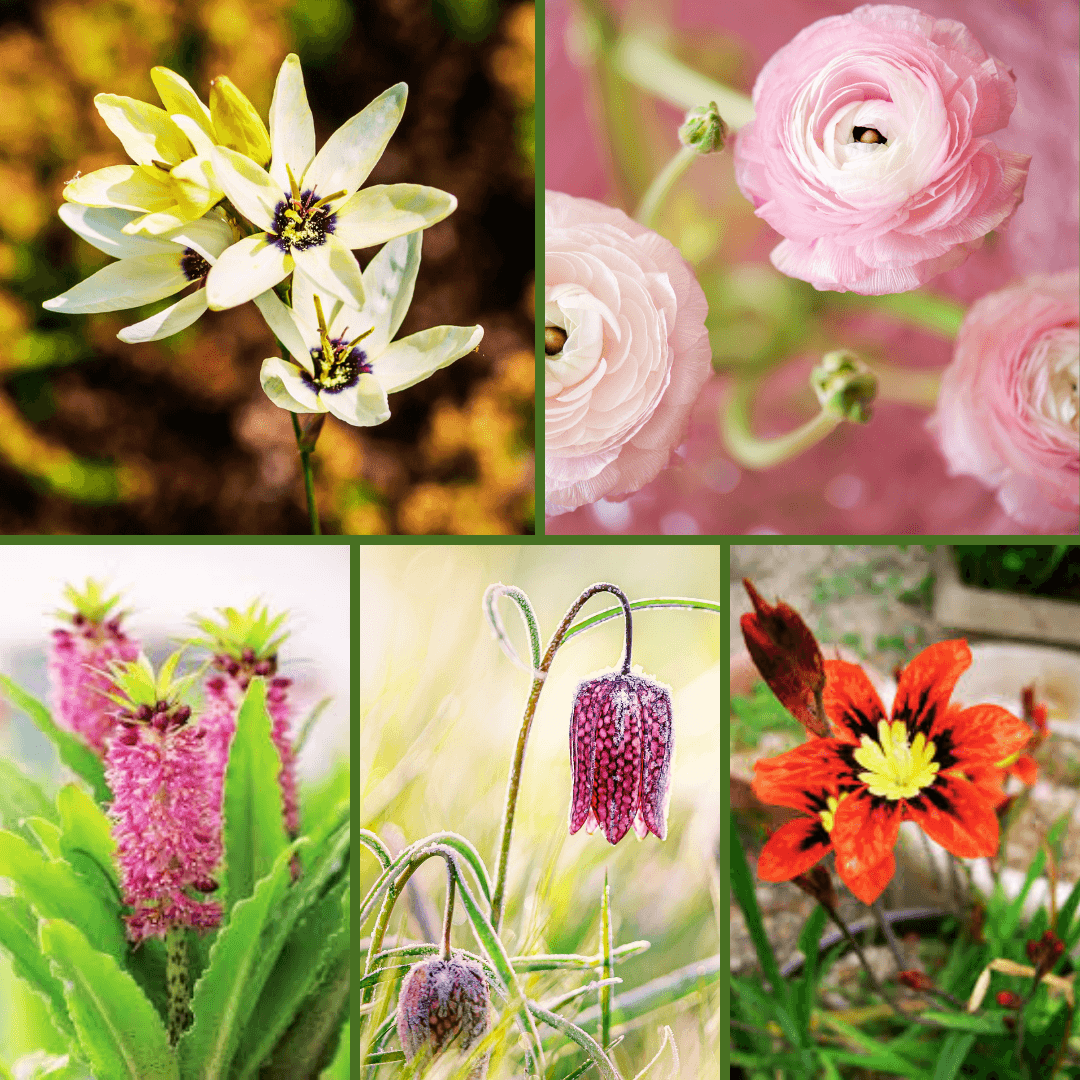
5. Exotic And Unique Bulbs
If you want to add a touch of the extraordinary to your garden, these exotic bulbs will impress.
Fritillaria (Fritillaria spp.)
Fritillaria produces bell-shaped flowers with unique checkered or spotted patterns, such as purple, yellow, orange, and white.
It thrives in spring, blooming in well-drained soil with full sun to light shade. Plant in groups for impact, or try Fritillaria imperialis for a regal look.
Ranunculus (Ranunculus asiaticus)
Ranunculus features rose-like flowers with delicate, layered petals in pink, red, yellow, orange, and white shades. These blossoms thrive in full sun and well-drained soil from late spring to early summer. Soak the bulbs before planting for better growth; they are excellent for cut flowers.
Eucomis (Eucomis spp.)
Eucomis, or Pineapple Lily, produces star-shaped flowers on tall spikes topped with tufted bracts resembling pineapples.
It likes soil that drains well and light that is moderate to full. It blooms throughout the summer. A tremendous tropical addition to gardens, it’s perfect for containers and adds exotic charm to any space.
Ixia (Ixia spp.)
Ixia, also known as African Corn Lily, boasts star-shaped flowers in vibrant colours like pink, orange, yellow, and white. Blooming from late spring to early summer, it grows best in well-drained soil with full sun—plant in drifts for a natural look, attracting pollinators such as bees and butterflies.
Sparaxis (Sparaxis spp.)
Sparaxis, or Harlequin Flower, produces brightly coloured blooms with contrasting centers. Its late spring to early summer blooms thrive in soil that drains appropriately and receives full light.
Plant it in clusters for a striking effect. It adds vibrant colour to any landscape and is ideal for rock gardens and borders.
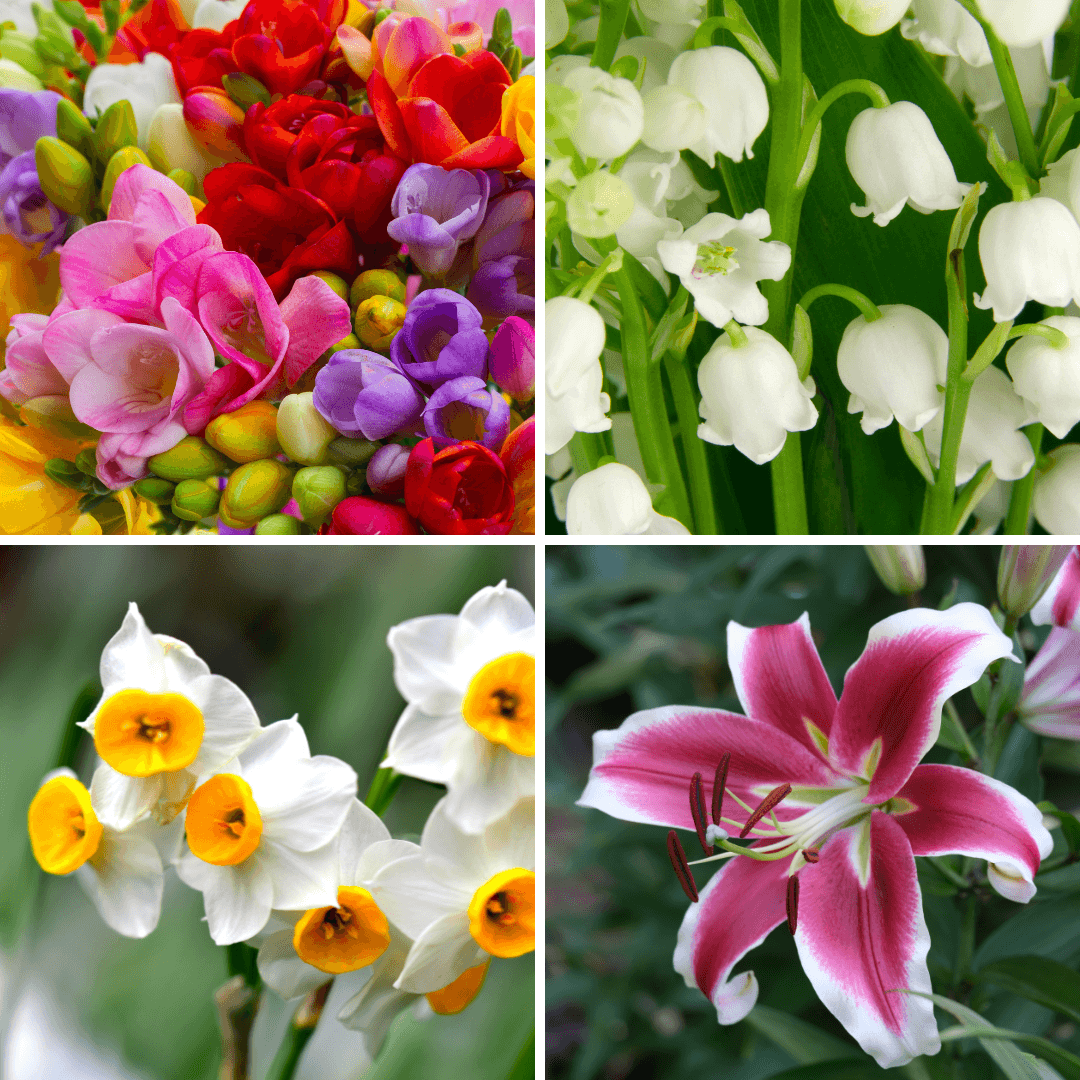
6. Fragrant Bulbs
For those seeking fragrance in addition to colour, exploring the types of bulbs to plant that offer delightful scents will enhance your garden experience.
Freesia (Freesia spp.)
Freesia features white, yellow, pink, purple, and tubular flowers with a sweet, citrusy fragrance. It blooms from late spring to early summer and thrives in well-drained soil and full sun. Ideal for cut flower arrangements, it’s best planted in containers for straightforward scent enjoyment.
Lily Of The Valley (Convallaria majalis)
Lily of the Valley produces tiny, bell-shaped white flowers with a sweet, intoxicating fragrance. It blooms in late spring and prefers moist, well-drained soil with partial to full shade. It spreads quickly, making it perfect for shaded locations and for ground cover.
Narcissus (Narcissus spp.)
Narcissus, including fragrant varieties like ‘Paperwhite’ and ‘Erlicheer,’ offers sweet, strong scents. Blooming in spring, it grows in well-drained soil with full sun to partial shade. Narcissus is perfect for forcing indoors during winter and adds fragrance to gardens.
Oriental Lilies (Lilium orientalis)
Oriental Lilies feature large, trumpet-shaped white, pink, and yellow flowers with a strong, sweet fragrance. Their ideal growing conditions are full sun to partial shade and well-drained soil; they bloom throughout the summer. Plant in groups for impact, which are excellent for cut flower displays.
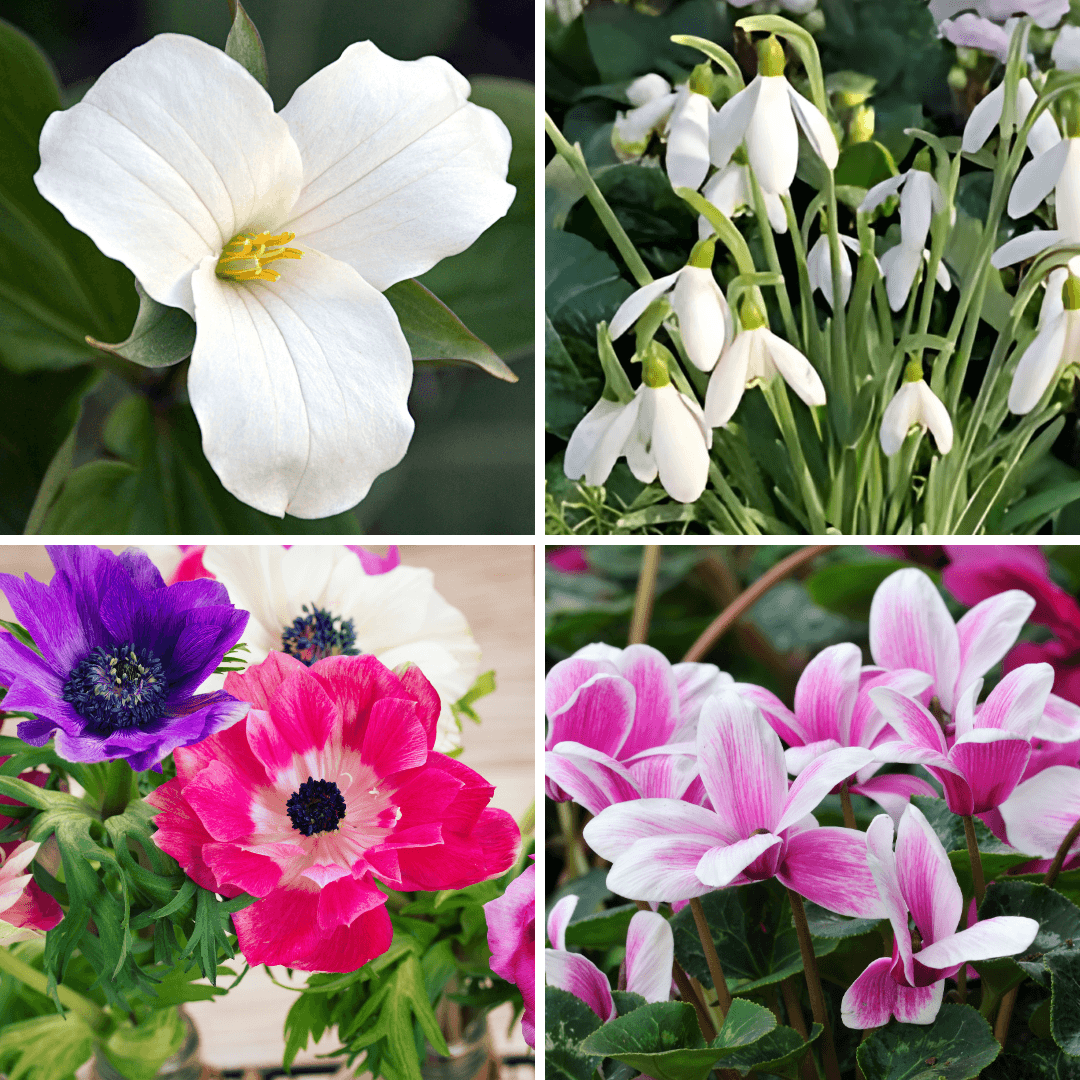
7. Bulbs For Shade Gardens
Not all bulbs require full sun. These shade-loving varieties are perfect for brightening up the darker corners of your garden.
Anemone (Anemone spp.)
The beautiful, poppy-like white, pink, blue, and purple flowers of an anemone bloom from spring to the beginning of summer. They are ideal for woodland gardens and shaded borders and add soft, vibrant colour to shaded areas.
Trillium (Trillium spp.)
Trillium produces three-petaled white, pink, and red flowers in spring. It grows best in partial to complete shade and wet, well-drained soil.
Native to North America, it’s perfect for naturalizing in shaded areas and makes a lovely addition to woodland and forest gardens.
Cyclamen (Cyclamen spp.)
Cyclamens feature heart-shaped leaves and delicate, nodding pink, white, and purple flowers that bloom from late winter to early spring.
It grows best in soil that drains properly and has some shade. Cyclamen is ideal for shaded rock gardens and containers and adds early-season interest to shaded spots.
Galanthus (Galanthus spp.)
The tiny, bell-shaped, white flowers that bloom from late winter to early spring are called snowdrops, or galanthus. They do well in moist, well-drained, and partially shaded soil.
They are one of the earliest bloomers, perfect for naturalizing in woodland gardens, bringing fresh blooms when little else is in bloom.

8. Bulbs For Containers
For small spaces like patios and balconies, exploring the types of bulbs to plant that thrive in containers is a great way to add vibrant colour.
Muscari (Muscari spp.)
Muscari, or Grape Hyacinths, produce clusters of small, bell-shaped blue, purple, and white flowers blooming in spring. Their ideal growing conditions are well-drained soil and full sun to mild shade. They add a vibrant touch to early spring landscapes and are suitable for containers, borders, and rock gardens.
Scilla (Scilla spp.)
Scilla produces small, star-shaped blue, white, and pink flowers that bloom in early spring. It prefers well-drained soil and grows well in full sun to partial shade. Perfect for naturalizing in lawns and containers, Scilla brings a splash of colour to early spring gardens.
Alliums (Allium spp.)
Alliums feature spherical clusters of tiny purple, pink, white, and yellow flowers that bloom from late spring to early summer.
These bulbs thrive best in well-draining soil and receive full sun. Known for their architectural appeal, they are ideal for containers and are deer-resistant.
Amaryllis (Hippeastrum spp.)
Amaryllis produces large, trumpet-shaped red, pink, white, and orange flowers that bloom from winter to early spring. They prefer well-drained soil with full sun to partial shade. Perfect for indoor containers, they are easy to force for holiday blooms, adding colour to winter months.
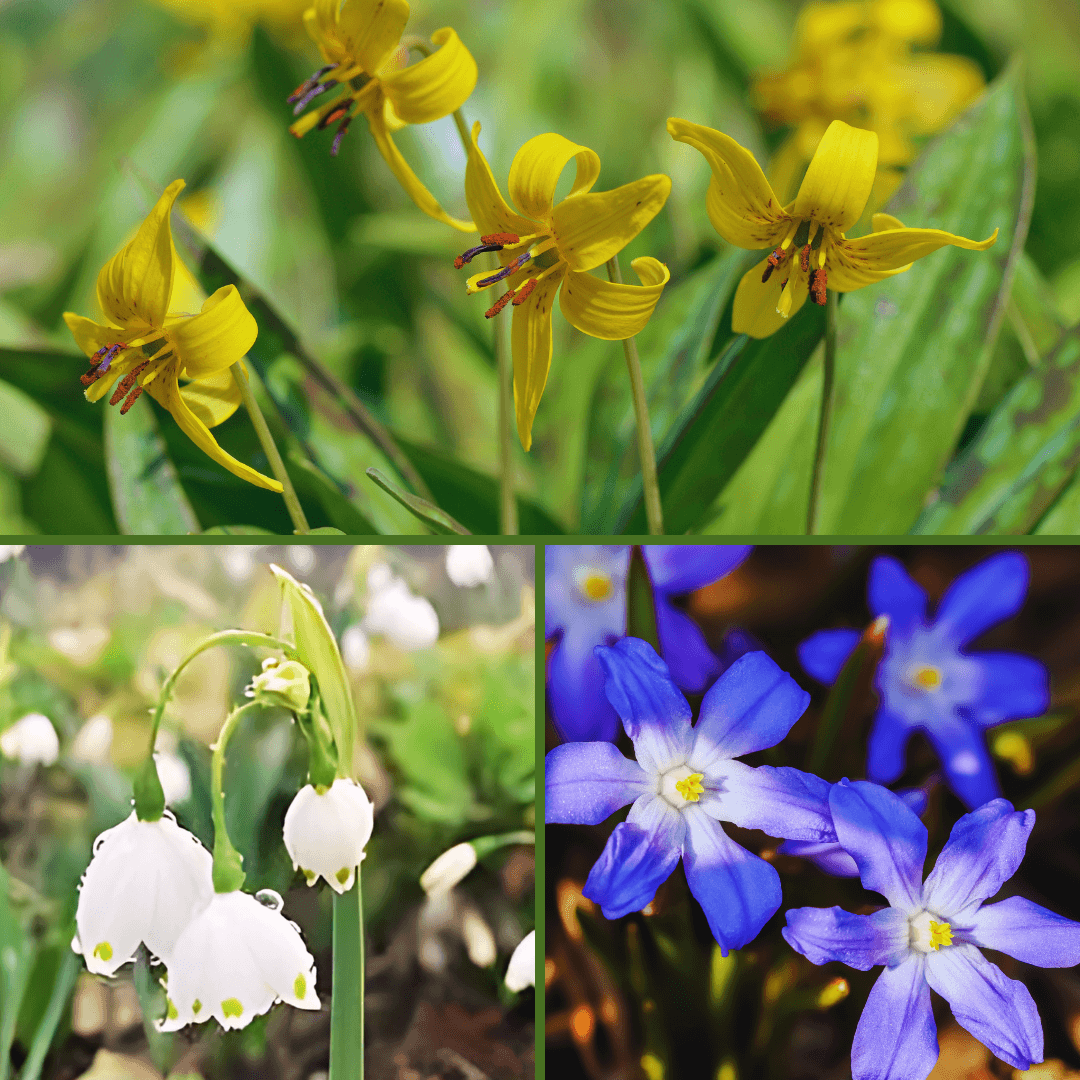
9. Bulbs For Naturalizing
Naturalizing bulbs spread and multiply over time, creating a carpet of colour in your garden.
Chionodoxa (Chionodoxa spp.)
Chionodoxa, or Glory of the Snow, produces star-shaped blue, pink, and white flowers during early spring. Its ideal growing conditions are well-drained soil and full sun to mild shade. It is perfect for naturalizing in lawns and woodland gardens and adds colour to early spring landscapes.
Erythronium (Erythronium spp.)
Erythronium, also known as Dog’s Tooth Violet, blooms in spring with nodding, lily-like flowers in yellow, pink, and white.
These bulbs grow best in moist, well-drained soil with partial shade, making them perfect for shaded woodland gardens, where they can naturalize and thrive.
Leucojum (Leucojum spp.)
Leucojum, or Snowflakes, produces bell-shaped flowers with green-tipped petals in spring. Full sun is preferred over partial shade; the soil should be wet and well-drained. Excellent for naturalizing damp areas, they offer early spring beauty with their delicate, nodding blooms.
Conclusion
Selecting the right types of bulbs to plant based on your garden's conditions will help ensure a year-round display of vibrant and stunning flowers. There is a bulb for every season and garden type, from early spring crocuses to summer dahlias.
Plants suitable for soil, sunshine, and climate will help you build a beautiful, low-maintenance garden. With proper care, bulbs reward you with stunning, long-lasting flowers that brighten any garden.
I trust you enjoyed this article on the Types Of Bulbs To Plant For A Gorgeous Garden. Please stay tuned for more blog posts soon. Take care!
JeannetteZ
>>>Please click here to read my all-inclusive article, About The Essential Companion Planting Guide<<<
>>>Please click here to read my all-inclusive article about Container Gardening<<<
>>>Are you interested in homegrown herbs and medicine? Please click here to find out more about it!<<<
Your Opinion Is Important To Me
Do you have thoughts, ideas, or questions? I would love to hear from you. Please leave me your questions, experiences, and remarks about this article on the Types Of Bulbs To Plant For A Gorgeous Garden in the comments section below. You can also email me at Jeannette@Close-To-Nature.org.
Disclosure
This post may contain affiliate links. As an Amazon Associate and other affiliate programs, I earn from qualifying purchases at no extra cost to you. Please read my full affiliate disclosure.
You might also enjoy these blog posts:
Fast-Growing Plant Seeds For A Thriving Garden
Best Summer Vegetables To Grow For A Thriving Garden
Ultimate Fast-Growing Pot Seeds For A Thriving Garden
Best Annual Flowers For Containers
Master Growing Dahlias In Containers


